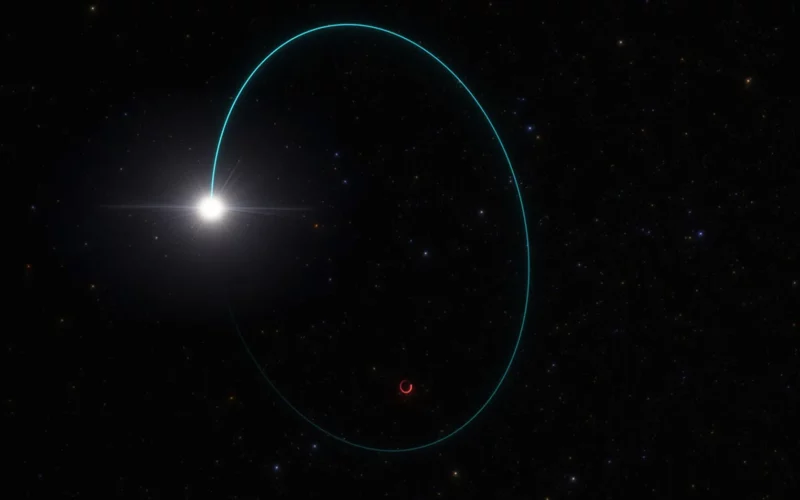Astronomers have made a remarkable discovery in the Milky Way, identifying a black hole with a mass approximately 33 times greater than that of our sun. This finding marks it as the largest known black hole in our galaxy, second only to the supermassive black hole residing at the center of the Milky Way.
Situated roughly 2,000 light-years away from Earth, in the constellation Aquila, this newly pinpointed black hole is accompanied by a companion star that orbits around it. The proximity of this black hole, within cosmic scales, makes it a notable discovery, shedding light on the mysteries of our galactic neighborhood. To provide context, a light year represents the distance light travels in a year, equivalent to about 5.9 trillion miles.
Black holes, characterized by their immense density and gravitational pull, pose a challenge for astronomers to detect due to their ability to trap even light within their grasp. The identification of this black hole was made possible through observations conducted as part of the European Space Agency’s Gaia mission. The black hole’s presence was inferred from its effect on the motion of its companion star. Data gathered from the European Southern Observatory’s Very Large Telescope in Chile and other ground-based observatories were crucial in confirming the mass of this black hole.
“This black hole is not only very massive, it is also very peculiar in many aspects. It is really something we never expected to see,” remarked Pasquale Panuzzo, a research engineer at the French research agency CNRS, and lead author of the study published in the journal Astronomy & Astrophysics.
One intriguing aspect of this discovery is the peculiar trajectory of the black hole and its companion star within the Milky Way. Unlike typical stellar orbits in our galaxy, they travel in the opposite direction, adding to the enigma surrounding this cosmic phenomenon.
Believed to have formed from the remnants of a star more than 40 times the mass of our sun, this black hole, known as Gaia BH3, represents the largest stellar black hole known to date. This discovery sheds light on the mechanisms behind the formation of stellar black holes, furthering our understanding of the universe’s evolution.
Gaia BH3’s companion star, while sharing a similar age to its predecessor, exhibits intriguing differences. With approximately 76% of the sun’s mass, it orbits the black hole on an elliptical path, displaying variations in distance akin to our solar system’s planetary orbits.
“The surprising result for me was the fact that the chemical composition of this companion star does not show anything special, so it was not affected by the supernova explosion of the black hole,” noted Elisabetta Caffau, astronomer at Observatoire de Paris and study co-author.
The discovery of Gaia BH3 offers valuable insights into stellar evolution models, highlighting the role of low metallicity stars in the formation of massive black holes. As researchers delve deeper into the mysteries of the cosmos, questions surrounding the upper limits of stellar black hole masses remain subjects of ongoing scientific inquiry.
“The maximum mass for a stellar black hole is a matter of active scientific debate,” Panuzzo concluded, emphasizing the ongoing exploration and discovery in the field of astrophysics.








